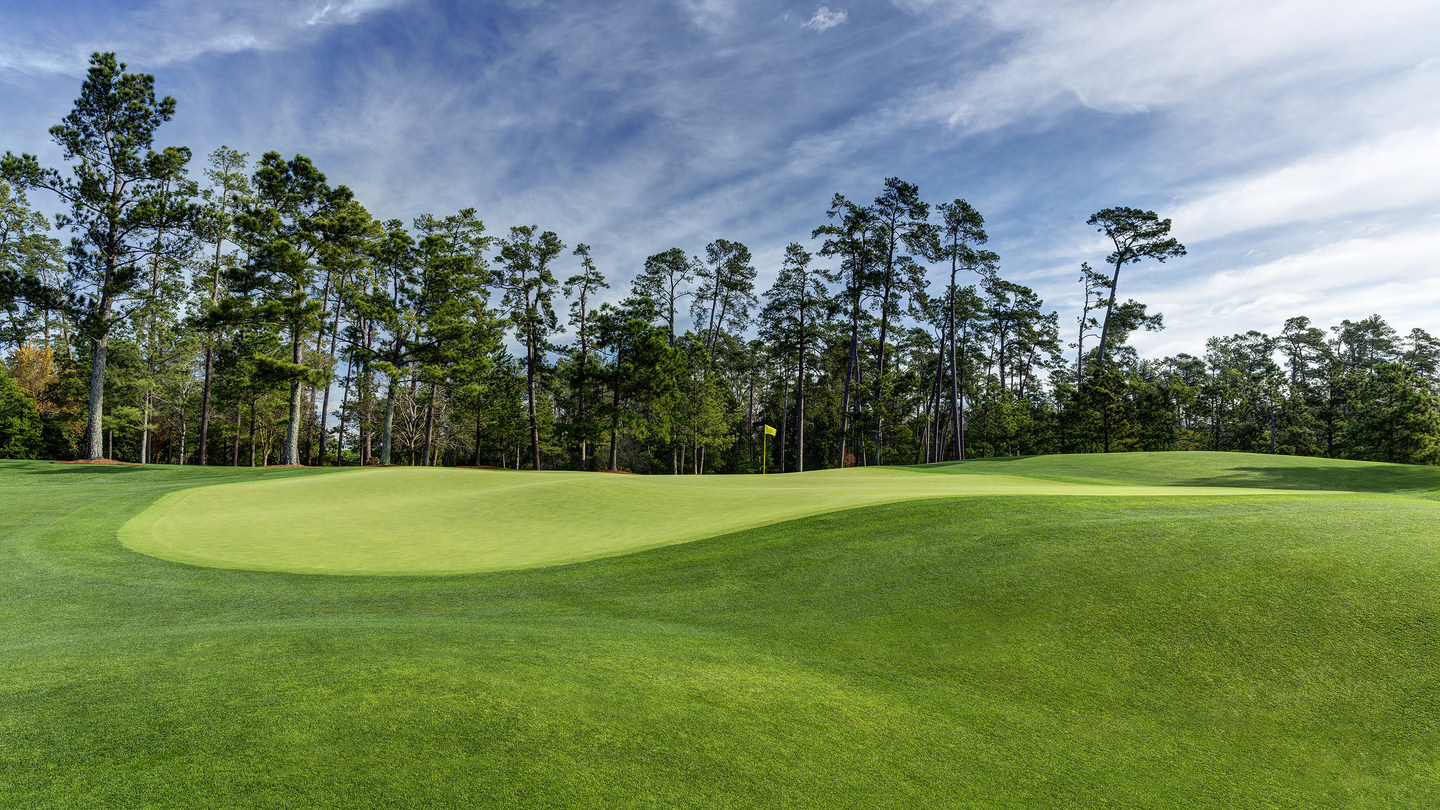Tucked between the theatrics of two famous par 5s lies the pivotal hole on Augusta National’s back nine, the par-4 14th. The PGA Tour’s Sean Martin revealed last week that the winners of the Masters have gained more strokes on their competitors on No. 14 than on any other back-nine hole. Standing on the 14th tee, players are thinking birdie, but the hole has the ability to derail their hopes of a green jacket. Unlike its counterparts at Augusta, the 14th doesn’t rely on cavernous bunkers, towering pines, or watery tombs to accomplish this feat.
This moderate-length par 4 is the only hole at Augusta without a bunker. Instead, it relies strictly on the course’s best feature: its natural contours. Television tends to flatten these, but a trip to Augusta reveals how well Alister MacKenzie and Bobby Jones used the undulations of the property. Nowhere does this become clearer than on the 14th hole.
The fairway traverses the same ridge that gives players fits on the 13th, but the star of this bunkerless hole is its jaw-dropping three-tiered green. Reportedly described by Ben Crenshaw as “the most three-puttable green in America,” this green cascades down the ridge from left to right. This tilt asks players to shape their shots right to left and forces them to aim left of their ultimate target. Demanding an addition degree of precision, each section of the green—left, center, and right—is set apart by distinct slopes. Plus, everything is guarded by the kind of severe false front more often found in Scotland.

From short right of the 14th green. Photo Courtesy of masters.com
The toughest pin position is top left. Finding this small section yields an easy birdie, but missing a few feet short sends you down the false front into a hopeless position.
The center tier houses the famed Sunday pin, which produces the drama of shots banking off the slope to the left and funneling toward the cup. While this feature can create birdies, it can also lead to difficult two putts after slight misses left or right.
The largest portion of the green is low right. This side of the green repels from the front right and can leave nervy chips.
The best miss is long; it leads to a simple uphill shot to each pin. But a short ball that catches the false front is hopeless, resulting in what Geoff Ogilvy describes as a “one-in-five” proposition.
Further complicating the strategy of the 14th hole is MacKenzie’s overall use of natural slopes. While the tee shot, like most at Augusta, seems simple, there is a preferred location on the fairway. A drive that hugs the trees to the left yields a short-iron approach from a relatively flat lie. But tee shots that find the left-center or right side leave a severe sidehill lie, the ball well below a right-handed player’s feet. For a righty, this lie promotes a fade, the opposite shape that the green prefers, as well a short miss, which brings the false front into play.
No. 14 embodies the rich challenges of Augusta National. It yields birdies to exceptional play but inflicts punishment on overly cautious swings and poor execution. And it does all of this with neither sand nor water. Subtle and counterintuitive, Augusta’s 14th hole tests the best players in the world simply by capitalizing on the contours of the course’s majestic property.
More Masters coverage from The Fried Egg team:
Is Augusta National Turning Over a New Leaf?
Geoff Ogilvy’s notes on all 18 at Augusta National
Stories worth your time and tracking at the 2022 Masters
The Art Behind Augusta’s Roars: Focal points in Alister MacKenzie’s routings
Tiger’s Masters flirtation is something more than ceremonial


 by
by 
